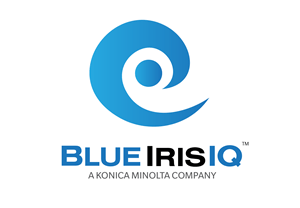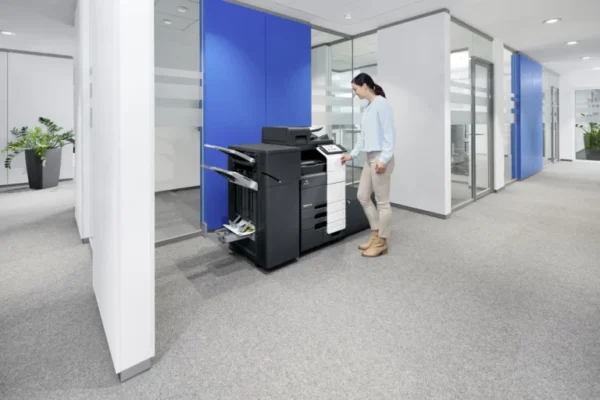New opportunities are arising amidst past tensions.
Earlier this year, The Cannata Report shared strong partnering strategies for office technology dealerships and original equipment manufacturers (OEMs), however, one nagging sticking point is the manufacturer-direct sales branches, which sometimes exert their leverage and pose a threat to independent dealers. For many years, this has appeared high atop dealers’ list of concerns in our Annual Dealer Survey. The topic used to be the leading dealer concern but has fallen to second or third place, depending on the dealer and the year of our Survey.
Dealer disenchantment can be deep-seated when production is taken away from accounts, but it seems as though the competitive juices have quelled. In 2022, nearly one-third of responding dealers reported competing against OEM branches as their chief source of anxiety; last year, the percentage calmed to half that number (16%). Why the drastic change?
Once manufacturing-centric, the “Big Six” office technology OEMs have had a balance-sheet reckoning of sorts. Canon, Konica Minolta, Kyocera, Ricoh, Sharp, and Toshiba now realize that the key to their futures lies in providing top-notch service to their major accounts. (Brother, Epson, HP, Lexmark, RISO, and Xerox also play in this space.) These OEMs are starting to lean on their dealer partners for valuable assistance.
As printed page volumes continue to drop, “the focus turns away from manufacturing,” points out Dan Larkin, print solutions director at Marco. “OEMs are looking for ways to diversify, too.” Becoming managed service providers (MSPs) is one solution, and manufacturers have begun to seek help from dealers to support their direct customers in this endeavor. The Cannata Report’s 39th annual survey (2024) reveals that 54% of dealers report increased MPS revenues.
“OEMs are taking ‘baby steps,’ [and] conversations are happening,” Larkin noted. “They are engaging dealers.” Interestingly, the global skilled labor shortage may be working in favor of the dealerships. “The shrinking population of competent, qualified service technicians has acted as a catalyst,” he added. As 2025 approaches, Larkin is one of three seasoned executives from a trio of dealer organizations—two large and one smaller—who have witnessed the cyclical ebb and flow over time and discussed the landscape of this once-tense topic: manufacturers selling devices directly. But first, some perspective.
Turning the Page
There was a time, not so long ago, when dealer-placed machines in the field (MIFs) faced fleet depletion. When fighting for pages heated up and pricing became cut-throat, it could be tough to compete against powerful manufacturers when they decided to flex their broad muscles. Just a few years back, reports circulated within the channel about how some dealer owners became outraged as they got side-stepped and their production print customers received invitations to OEM events. Was it paranoia, or were dealers merely defending their turf?
Some of that animosity goes back at least 15 years, according to Tim Renegar, president of Kelly Office Solutions, which sells imaging technology from Brother, Epson, Konica Minolta, and Ricoh. He cites a hardball example in which his sales crew was vying for the business of a local print shop. “The OEM had been giving our prospect crazy single-click, two-sided pricing on 11×17 work for five years,” he exclaimed. Like most dealers, Kelly couldn’t compete with undercutting like that. More recently, another OEM (which shall remain nameless) has developed somewhat of a reputation for lowball bidding on large church accounts. Renegar interjected, however, that “it’s rare for us to go up against a manufacturer these days.”
Marco’s Larkin agrees. “Conflicts have died down,” acknowledged the 15-year veteran of the Minnesota-based mega dealer, which primarily resells Konica Minolta and Sharp copiers along with HP and Lexmark printers. (Canon, Kyocera, Toshiba, and now Fujifilm Business Innovation Corp. are in its copier mix, too.) The main reason for improved synergy with dealers, he suggested, is that OEM direct-to-market revenues have weakened substantially, particularly during the COVID-19 pandemic. “Due to underperforming direct branches in the 2020-22 timeframe, some manufacturers laid off 20% of their workforce,” he said.
Why has performance lagged among the direct sales ranks? Larkin explains that paper-thin profit margins, especially on service, hit manufacturers hard during the global viral outbreak. Subsequently, OEMs were forced to redefine their strategy. “Do they want to do manufacturing, be the distributor, and handle sales and service,” he asked rhetorically. “It’s a lot to juggle and really difficult to do all three well.”
Thankfully, times have changed. The OEM philosophy was vastly different, almost arrogant, 16 years ago, when Renegar sold Charlotte Copy Data, his previous office equipment company, to Sharp Electronics in 2008. (Historians will note that Ricoh spent over $1.5 billion to acquire IKON Office Solutions that same year.) “Over time, many direct branches realized that too much expense was built into their businesses. Many struggled…and it was killing them,” he said.
National vs. SMB Accounts
“The OEMs play in a different arena now,” observed Renegar. “Their main focus is way up market. They seek accounts that they can service nationally.” As a result, most steer clear of the small and midsize businesses (SMB) market where there seems to be plenty of big fruit ripe for the picking for independent office technology dealers. Some of the major printer manufacturers maintain house accounts with as many as 2,000 customers. Renegar mentioned Toyota’s new electric vehicle battery plant, which will employ some 5,000 people and is set to open in Q1 of 2025 in nearby Liberty, NC. “I can’t handle the Toyota account,” he admitted, “but we at Kelly do want the other companies that support their operation.” Therein lies the difference. He contends that most dealers don’t want to tackle those huge accounts. On the flip side, dealerships can be a better source for smaller accounts. “For one, they’re closer to the customer,” said Renegar. “OEMs still win because they get the aftermarket.”
Marco’s experience has been similar. HP won’t chase enterprise accounts whose company names do not appear on the Fortune 1500 list, according to Larkin. “OEMs have not completely abandoned the SMB space, but it’s close,” he said.
Nontraditional, Chicago-area dealer Impact Networking doesn’t see manufacturers much anymore, probably due to its network-centric mindset. “We manage customer [computer] networks and can handle their IT, security, and marketing,” explained Mike Lepper, the senior VP and partner who joined the firm in mid-2010 right out of college. On the MSP side of the business, most of its contact is with C-suite-level execs. Lepper added that the printer hardware component is almost an afterthought: “It’s not a print-first strategy at Impact.”
Consolidating OEM Direct Branches, Leveraging Interdependency
One sign of the turning tide came in mid-2021, when mega dealer DEX Imaging, based in Tampa, FL, acquired 10 Konica Minolta direct dealer operations in Alabama, the Carolinas, Florida, and Texas. (This past June, DEX was acquired from Staples, Inc. by Gamut Capital Management.) Such downsizing moves have been made by Xerox and other OEMs in the past. When Ricoh exited the SMB market in 2017, going from a whopping 450 direct operations down to only 21, Kelly Office Solutions was one of the beneficiaries. “We were able to purchase several of their MIFs,” Renegar revealed. “It has been a great partnership for us, very cordial and cooperative.”
However, some other partners felt miffed that they weren’t chosen or even considered. Under the condition of anonymity, one lamented, “We absolutely would have welcomed the opportunity to buy out some of that business and inventory from Ricoh.” Wisconsin-based dealer Gordon Flesch Company was in, while Midwest counterpart Impact Networking was left out. Lepper nonetheless thinks such wheeling and dealing is a smart play. “It’s best to leave emotion out of the equation,” he advised. “We appreciate that OEMs need to maximize margins and opportunities to do what’s best for their business.”
Heading into the new year, such competitive tensions are “really a non-issue for Konica Minolta,” proclaimed spokesperson Maggie Grande, senior manager of marketing communications. Indeed, Marco reports having seen Konica and HP strive diligently to eliminate dealer conflict.
This has not been much of an issue for Sharp dealers either. As Bob Madaio, VP of marketing for Sharp Imaging and Information Systems, noted, “We are heavily dealer dependent, more so than most of our OEM competitors, so we very carefully police any branch/dealer conflicts and deal with any issues quickly. However, it has not been a dramatic source of conflict for us. We are very careful to help incumbent dealers win or keep business, and they know the same is true for any branch accounts.”
The bottom line is that business and revenue flowing through the independent dealer channel, at least in the United States, exceeds that of OEM direct-to-customer branches. So, if a dealer-partner is spending, let’s say, $50 million with a given manufacturer in 2024, that OEM wants to secure at least the same level of financial commitment next year.
Marco COO Trevor Akervik pointed out the 20% to 25% decline in printed pages, which the entire industry is grappling with. “The manufacturers rely on dealers to help keep their factories going,” he bluntly asserted, adding that diversifying is a great way to ensure dealer loyalty and growth. Larkin, his colleague, credits OEMs that understand the impact dealers can have on viable revenue streams down the road—beyond selling machines. “The manufacturers cannot afford to risk dealers being discontented,” he explained. “So, they’re extra careful to make sure we stay happy.”
Manufacturers may have less brick-and-mortar presence than ever before, Renegar observed, but the ratio strikes the right balance—at least for now. “Kelly’s OEM relationships are as strong as they’ve ever been,” he said. Occasional snags between the dealer and OEM still happen, he acknowledged. Prior to this autumn’s devastating damage from Hurricane Helene, Kelly ran up against an undisclosed manufacturer to bid on some county work in North Carolina. In a case of proverbial sour grapes, Kelly won the RFP but said the manufacturer refused to provide support, so the dealership was forced to work with another OEM.
“Frankly, I don’t understand that kind of thinking,” scoffed Renegar, “because it’s a win for the OEM no matter who secures the bid. Everybody wants to move machines, but let’s be honest: The real money gets made on parts and supplies.”
No matter which direction the give-and-take dealer/OEM dynamic follows over the next five years or so, Impact Networking’s Lepper believes mutual harmony boils down to truthfulness. “Both parties have to be honest,” he concluded. “We may not always like the outcome but, if they’re fair, we can live with those decisions.”



